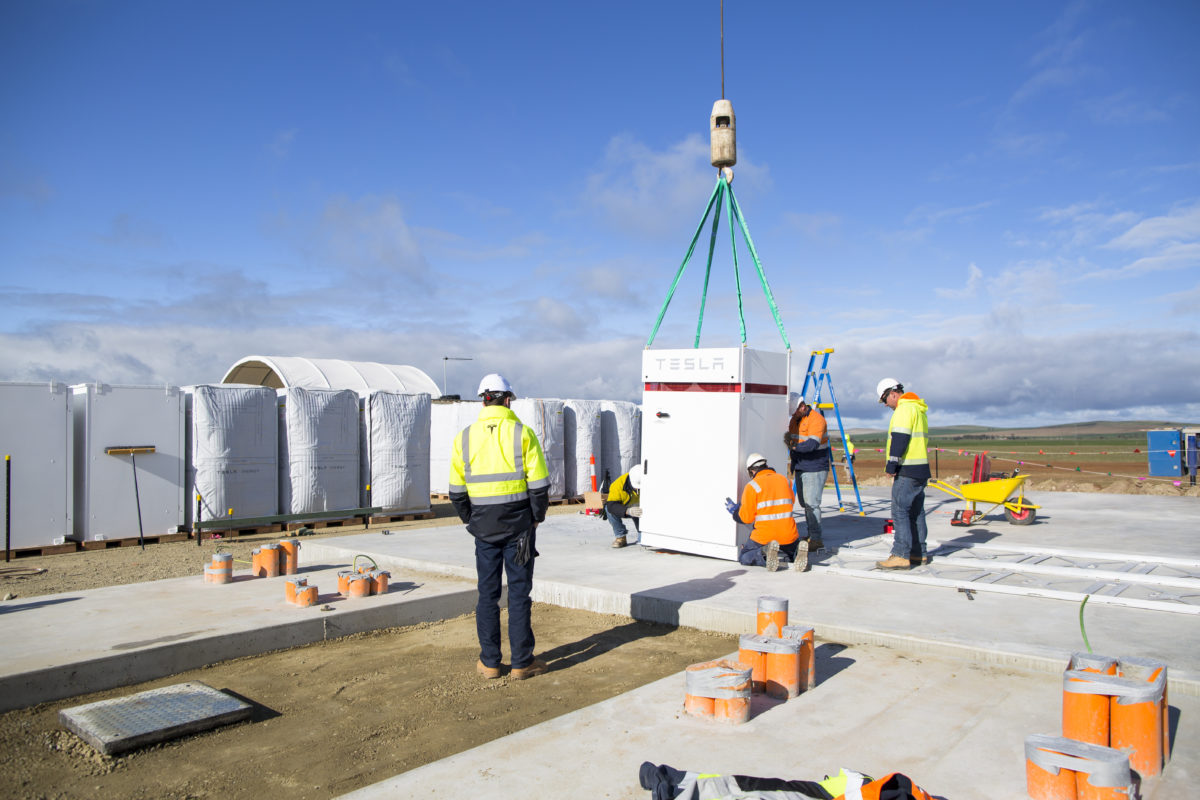Australia is forecast to more than double its energy storage capacity this year and achieve a staggering 12.9 GWh of cumulative storage deployments over the next five years despite a few hiccups along the way, according to U.S.-owned analyst Wood Mackenzie. For the first time, front-of-the-meter installations are forecast to overtake behind-the-meter capacity.
According to the new research, Australia is set to add 1.2 GWh of energy storage capacity in 2020, more than double the 499 MWh installed in 2019. This will take the country’s cumulative storage capacity to 2.7 GWh this year.
Last year, the battery storage sector in Australia started to gain momentum. According to the Clean Energy Council, 2019 was a watershed year for home and grid-scale batteries, with the more than 22,000 small-scale batteries installed taking Australia’s household storage capacity past 1 GWh for the first time. At the end of the year, 15 large-scale batteries were under construction.
According to WoodMac, 2020 is shaping up to be an even bigger year in terms of newly added capacity with a slight twist. For the first time, front-of-the-meter (FTM) capacity at 672 MWh will overtake the 581 MWh behind-of-the-meter (BTM) capacity in 2020, a result of funding programs by the federal and state governments, as well as the Australian Renewable Energy Agency (ARENA), WoodMac finds.
“The FTM market’s leading position is likely to be short-lived as the industry faces many uncertainties,” Wood Mackenzie senior analyst Le Xu said. “The coronavirus-led restrictions and economic downturn could cause delays or cancellations to the 4.6 GWh announced projects in the pipeline over the next five years.”
She went on to note that South Australia is particularly at risk as the majority of the planned deployments are located there. “Developers with strong balance sheets are in a position to push ahead with their project developments, but still face grid connection challenges in the future,” said Xu.
Contraction
With ARENA’s funding set to dry up in mid-2020, despite the need to address new challenges in grid integration, storage and reliability, storage developers are “pressed to seek private equity to cover 10%-50% of initial project investments”, said Wood Mackenzie.
Since projects may struggle to attract funding due to revenue uncertainties and risks of grid connection, the FTM market will be most affected and is likely to contract in 2022. Still, the future of the FTM market is bright as the cumulative capacity could hit 4.2 GWh by 2025, WoodMac finds, with most of the capacity coming from solar-plus-storage.
Looking into the future, cost reductions are expected to drive further deployments. By 2025, the analysts predict Australia’s cumulative energy storage investment will hit US$6 billion (AU$5.34bn) translating to 12.9 GWh of cumulative storage deployments.
“The costs of energy storage systems will decline 27% over the next five years. By 2025, the levelised cost of electricity (LCOE) of both solar-plus-storage and solar-and-wind-plus-storage are expected be cheaper than gas plants,” Xu said. “In general, we can expect renewables-plus-storage costs to be about 20%-29% lower in 2025 compared to today.”
But according to the latest LCOE analysis from Bloomberg New Energy Finance, batteries have already forged a more convincing business case than facilities such as gas peaker plants which could be quickly fired up to help meet surges in electricity demand. “The benchmark LCOE for battery storage has tumbled to US$150/MWh, about half of what it was two years ago,” BloombergNEF analyst Tifenn Brandily said.
According to BNEF, Australia hosts some of the lowest cost projects in the world, with LCOE for solar at AUA40/MWh and for wind at AU$50/MWh. The cost of wind collocated with storage is as low as AU$77/MWh, and solar and storage AU$90/MWh.
According to WoodMac, coal will still remain Australia’s cheapest source of electricity in 2025 and alternative energy sources will be needed to fill in the gap left by the country’s 31 GW retiring coal fleet. “Project developers, both domestic and international, are clearly unfazed by the challenges. The number of Australian developers has doubled to 40 this year,” Xu said.
This content is protected by copyright and may not be reused. If you want to cooperate with us and would like to reuse some of our content, please contact: editors@pv-magazine.com.









1 comment
By submitting this form you agree to pv magazine using your data for the purposes of publishing your comment.
Your personal data will only be disclosed or otherwise transmitted to third parties for the purposes of spam filtering or if this is necessary for technical maintenance of the website. Any other transfer to third parties will not take place unless this is justified on the basis of applicable data protection regulations or if pv magazine is legally obliged to do so.
You may revoke this consent at any time with effect for the future, in which case your personal data will be deleted immediately. Otherwise, your data will be deleted if pv magazine has processed your request or the purpose of data storage is fulfilled.
Further information on data privacy can be found in our Data Protection Policy.